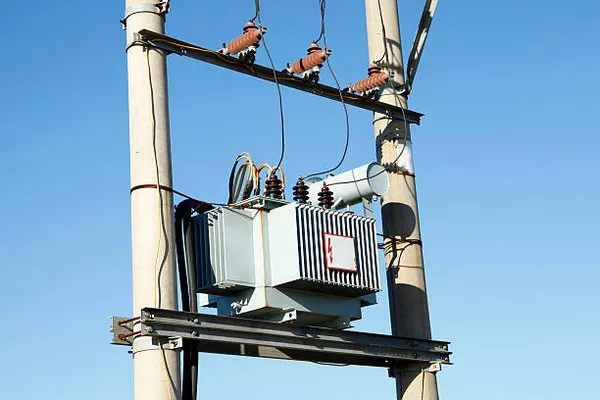Transformers are fundamental components in the realm of electrical engineering, playing a pivotal role in the transmission and distribution of electrical energy. Their primary function is to change the voltage levels to suit various applications, ensuring efficient power transfer and minimizing energy loss. The diversity in transformer design and application is vast, addressing the unique requirements of different industrial, commercial, and residential environments. This article delves into the various types of transformers, examining their functions, structures, and applications in detail.
1. Power Transformers
Power transformers are integral in the transmission of electrical energy across large distances and are typically used in high-voltage transmission networks. They are designed to operate at peak efficiency at high load conditions. Power transformers can be further classified into several subtypes:
Step-Up Transformer: Increases the voltage from a lower level to a higher level, used in power generation stations to step up the voltage for transmission.
Step-Down Transformer: Decreases the voltage from a higher level to a lower level, used in distribution networks to step down the voltage for domestic or commercial use.
2. Distribution Transformers
Distribution transformers are used to provide the final voltage transformation in the electric power distribution system, stepping down the voltage to a level suitable for use in homes and businesses. These transformers are typically smaller than power transformers and are designed to provide the necessary voltage regulation.
Pole-Mounted Transformers: Installed on utility poles to supply power to residential neighborhoods.
Pad-Mounted Transformers: Installed at ground level and enclosed in a secure housing, used in urban and suburban areas.
3. Instrument Transformers
Instrument transformers are used in conjunction with measuring instruments, meters, and protective relays to facilitate the accurate measurement of high voltages and currents in power systems. They are crucial for the safe and efficient operation of electrical networks.
Current Transformers (CTs): Measure high currents by producing a reduced current proportional to the current in the circuit, allowing for safe monitoring and control.
Voltage Transformers (VTs) or Potential Transformers (PTs): Measure high voltages by producing a reduced voltage proportional to the voltage in the circuit, ensuring safe and accurate voltage measurement.
4. Autotransformers
An autotransformer is a type of transformer with only one winding that acts as both the primary and secondary winding. Unlike conventional transformers, autotransformers can be more efficient and cost-effective for applications requiring small voltage changes. They are commonly used in applications such as:
- Voltage regulation in power transmission and distribution systems.
- Providing a variable voltage supply for testing and laboratory purposes.
5. Isolation Transformers
Isolation transformers are designed to decouple two circuits, allowing AC power to be transferred from one circuit to another without a direct electrical connection. This isolation enhances safety and noise reduction, making these transformers essential in sensitive equipment and medical devices.
6. Three-Phase Transformers
Three-phase transformers are used in three-phase power systems, which are common in industrial and commercial settings. These transformers can be configured in several ways:
Delta-Delta: Both primary and secondary windings are connected in a delta configuration, providing a stable and balanced output.
Delta-Wye (Delta-Star): The primary winding is connected in a delta configuration, and the secondary winding is connected in a wye configuration, commonly used to step down the voltage.
7. Single-Phase Transformers
Single-phase transformers are used in single-phase power systems, typically in residential and light commercial applications. They are simpler in design compared to three-phase transformers and are used for low voltage applications.
8. Oil-Filled Transformers
Oil-filled transformers use mineral oil as an insulating and cooling medium. The oil helps to dissipate heat generated during operation and provides insulation for internal components. These transformers are commonly used in high-voltage applications and can be classified into:
Sealed Tank Transformers: Completely sealed to prevent oil leakage and contamination.
Conservator Type Transformers: Equipped with a conservator tank to maintain the oil level and accommodate oil expansion and contraction.
9. Dry-Type Transformers
Dry-type transformers use air instead of oil for cooling and insulation. They are preferred in environments where oil-filled transformers pose a fire hazard or environmental risk. Dry-type transformers are available in several configurations:
Cast Resin Transformers: Windings are encapsulated in resin, providing excellent protection against moisture and environmental contaminants.
Vacuum Pressure Impregnated (VPI) Transformers: Windings are impregnated with varnish under vacuum pressure, enhancing insulation and thermal performance.
10. Special Transformers
Beyond the standard classifications, there are numerous specialized transformers designed for specific applications:
Furnace Transformers: Used in electric arc furnaces to provide the necessary current for melting metals.
Rectifier Transformers: Used in conjunction with rectifiers to convert AC to DC power, commonly used in industrial applications requiring DC power.
Phase-Shifting Transformers: Used to control the phase angle between input and output, aiding in power flow control in transmission networks.
Grounding Transformers: Provide a ground path to ungrounded systems, ensuring system stability and safety.
Applications and Importance
The diverse range of transformers is a testament to their critical role in modern electrical systems. Each type of transformer is tailored to meet specific requirements, whether it’s for high-voltage transmission, precise measurement, or ensuring the safety and reliability of electrical networks. Understanding the different types of transformers helps in selecting the right transformer for a given application, optimizing performance, and ensuring operational efficiency.
See Also WHAT DOES A TOROIDAL TRANSFORMER DO
Conclusion
Transformers are indispensable in the efficient generation, transmission, distribution, and utilization of electrical energy. The myriad types of transformers each serve unique and essential functions, addressing the diverse needs of various electrical systems. From high-voltage power transformers that enable the transmission of electricity over vast distances to specialized transformers designed for specific industrial applications, the world of transformers is vast and complex. As technology advances, transformers will continue to evolve, playing an ever-critical role in the power systems of the future. Understanding their types and applications is crucial for anyone involved in the field of electrical engineering, ensuring the safe, efficient, and reliable operation of electrical networks worldwide.

